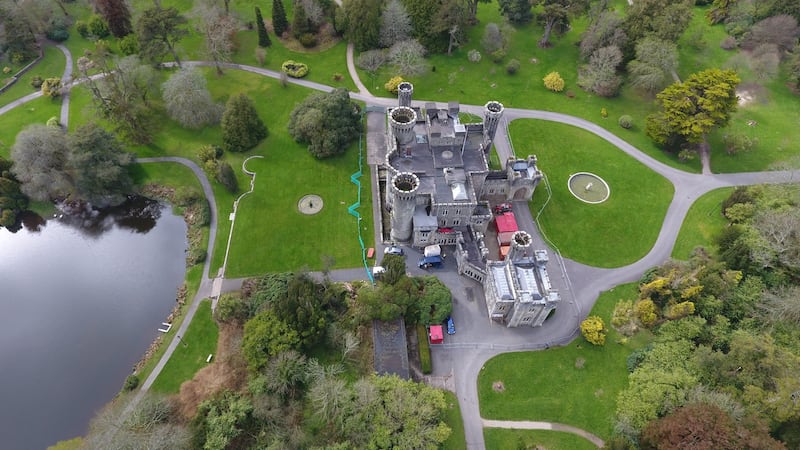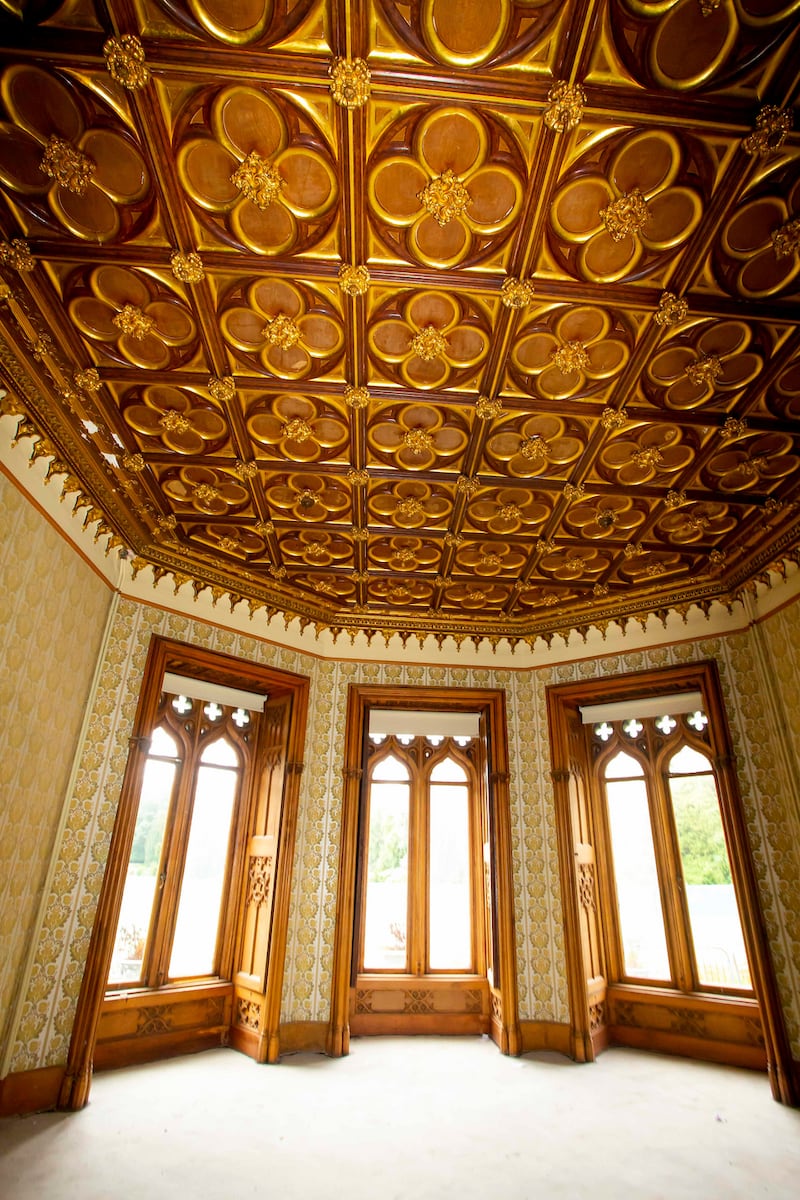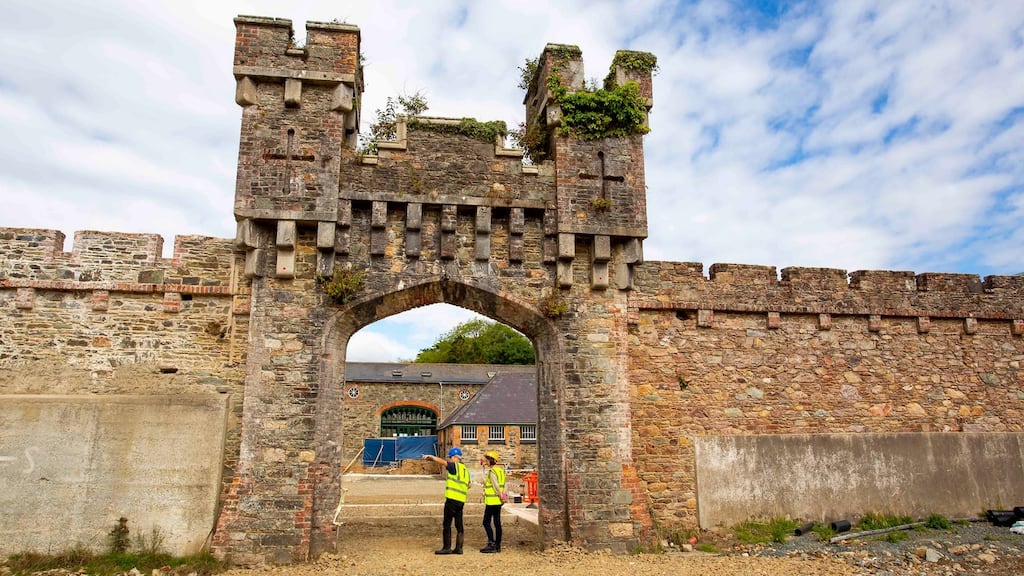As another National Heritage Week draws to a close, it’s clear that Ireland’s relationship to “the big house” has evolved considerably since the days when many people would happily have seen such houses destroyed or left to disintegrate. Family visits to State-owned historic properties are now one of the most popular activities on the heritage calendar – and by the time 2019’s programme of events is drawn up, there’ll be an exciting addition to the list.
Johnstown Castle in Co Wexford is undergoing a €7.5 million makeover, which includes conservation of the castle itself, the construction of a new visitor centre and the restoration of an 86m underground servants' tunnel.
The ornamental gardens at Johnstown, and the agricultural museum in the castle's stable yard, have been attracting a regular stream of visitors for years. Teagasc, which has owned the 150-acre estate since it was gifted to the State in 1945, has a research facility on the grounds. But the castle itself – though it has been used as a backdrop for weddings, Christmas family days and other one-off events – has never been open to the public.
It is, therefore, quite a privilege to don a hard hat and high-vis vest and, together with Matt Wheeler, curator of the agricultural museum, and Jo Tynan of the Irish Heritage Trust, thread my way through a small army of bulldozers and concrete mixers to explore the three-storey over-basement building.
With its turrets, battlements and magnificent silver-grey facade, the exterior of the castle looks like it has come straight from romantic period-drama central casting. Inside, however, it’s more like a funfair ghost-train ride as builders materialise from behind floor-to-ceiling swathes of protective black plastic, then disappear down dusty corridors. The main tasks at present are to install a lift, bring the electrics up to date and secure the roof.
Wooden figures
We pass through the porte-cochere rear entrance, where guests would once have arrived by carriage, into the hall, known as the apostles’ hall thanks to its lining of elaborately carved wooden figures. The dining room affords impressive views across the lake; in the library, a lighter patch of wallpaper on one wall marks the spot where a portrait of Napoleon will be rehung when the restoration work is complete. The original twin imperial carved wooden staircase was, sadly, removed in the 1940s. We climb its considerably less imposing replacement to the first floor, where the grand drawing room boasts a pair of pier mirrors, which were the biggest in the country when they were installed in the 1850s.
That little nugget of detail is just one of many from this extraordinary building's roller-coaster past. It was built by the Esmondes, who came to Wexford from Lincolnshire after the Anglo-Norman invasion in 1169. In the mid-1600s they were expelled by Oliver Cromwell, who gave the property to one of his soldiers. It was bought by the Grogan family in the late 17th century, only for the liberal landlord Cornelius Grogan to be hanged for complicity with the 1798 Rebellion.

Three lakes
In 1810 the estate was restored to his brother John Knox Grogan, who, with his son, Hamilton Knox Grogan-Morgan, created the Johnstown we see today. In the 1830s the Kilkenny architect Daniel Robertson worked on the castle and is believed to have laid out and planted much of the grounds, using clever water engineering to feed a series of three lakes.
As we pass through one room after another, many of them embellished with gorgeously carved wooden panelling, it's easy to imagine Johnstown at the peak of its glory, hosting parties and balls, with an army of servants delivering food and drink to the guests – as depicted in a couple of mid-19th century paintings by Edmund Thomas Parris that show fashionably dressed ladies and gentlemen strolling through the gardens.
In the early 20th century the castle still had its moments of glamour. One of the upstairs reception rooms had been converted to a bedroom with two boudoirs, one of which was built into the tower. The last private occupant of the castle, Lady Maurice FitzGerald – a granddaughter of Hamilton Knox Grogan-Morgan, married to the second son of the Duke of Leinster – had a bathtub placed in this circular space, enabling her to look out over the grounds as she soaked.

Donated to State
The story of Johnstown didn’t end when it was donated to the State in 1945. Picking our way through the darkness of the basement rooms, we come across a battered wooden bookcase labelled “Soil Geochemical Survey ’96” – a reminder that, without the custodianship of Teagasc over the past half-century, the castle might well have deteriorated beyond repair.
Even so, the amount of work necessary to create a visitor attraction at Johnstown, while respecting the integrity of the building, is breathtaking. Though Teagasc will still own the estate, the Irish Heritage Trust has been brought in as the management body. It will co-ordinate the ambitious redevelopment plan, which includes a new restaurant, a children’s play area, a new access road and car park.
Once the new visitor experience is up and running, it’s hoped that it will provide funds to undertake further restoration of the castle’s interior. “We’re trying to cover a lot of ground with the money we have,” says Matt Wheeler. “But the full potential of this building won’t be realised until our grandchildren take over.”
Which, when you think about it, is what heritage is all about.





















